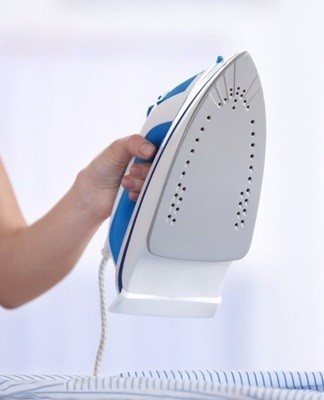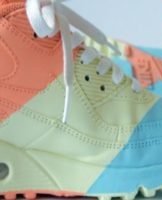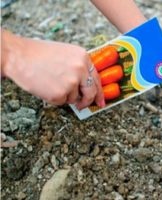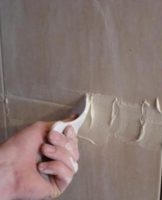Instructions for ironing linen properly at home
Clothing, linen, kitchen utensils made of natural fabrics (cotton, linen, silk) are in great demand. They are superior to products made from artificial and synthetic fabrics in terms of comfort of use, environmental friendliness, durability, but require special care. Linen items will quickly lose their appeal if you don't know how to iron the linen.
What you need to know about linen ironing
Linen fabric is made from fibers obtained from fiber flax stalks. Natural textiles, regardless of the type of weave, have the same properties:
- resistance to mechanical stress;
- Temperature;
- acid.
The qualitative characteristics are explained by the high content of cellulose in flax fibers (80%). Thanks to her, linen clothes cool the body in summer and warm in winter. Micropores in the fabric allow air to circulate making the garment comfortable to wear.
At the same time, due to cellulose, the fabric easily creases, loses its shape and is difficult to iron: with careless movement, creases and creases appear. The conditions for high-quality ironing of linen clothes are:
- temperature regime (from 190 to 200 degrees);
- humidity of the fabric to be ironed;
- flat surface to iron on;
- comfortable iron with heavy sole.
At the end of the ironing, the clothes are left to cool before being placed in the closet. It is best stored on a hanger, avoiding deformations.
How to prepare a product
Washing linen clothes has its own characteristics. Heavyweight fabric is washed with a conditioner to soften the fibers. Under no circumstances should you use a strong wring (manual or mechanical) so that creases are noticeable on a damp material. Once dry, they won't go anywhere and it will take considerable effort to smooth them out.
After rinsing, the linen product must be damp so that water can drip off. For drying, use wide shoulders or a hygroscopic flat surface. Things should not be dried in direct sunlight, near heating devices. Uneven heating can cause loose clothing.
The semi-wet product is dried and ironed with a hot iron. If it's almost dry, dampen it with a steamer or use an iron with a steam generator.

Iron needs
The convenience of ironing linen clothes depends on the iron. Properly selected household appliances allow you to iron easily crumpled fabric items with the least amount of effort.
Weight
The weight of the device depends on the type and varies from 600 grams to 6 kilograms. The lightest are travel irons, the heaviest are steam generators. When ironing with an iron weighing up to 1 kilogram, you will have to exert additional physical effort. It is better if the weight of the iron is enough to level the surface of the linen product. The optimal weight for these purposes is 2 kilograms.
Handle shape
When you buy an iron, you have to hold it in your hand. The handle should fit the palm grip and be balanced against the weight of the instrument. If you lift it in the air, the iron should not be compensated by the nose or the heel of the sole. The safety of ironing largely depends on the choice of the handle.The presence of rubberized elements will prevent the palm from slipping on the handle.

fuming
Steam irons are the most practical devices for straightening dense and wrinkled fabrics. Manufacturers offer devices with a built-in water tank and a docking station. In the second case, the container with water is connected to the device by a pipe.
A fairly large amount of steam is needed for ironing laundry, and for particularly creased places, a burst of steam. The irons are distinguished by their vaporization power: from 30 grams to 150 grams per minute. The functionality depends on the power of the heating elements of the iron and the position of the spray holes in the soleplate. For ironing linen fabrics, they should be evenly distributed over the entire smoothing surface of the household appliance.
Type of sole
The soleplate of the iron should heat up evenly and have a good glide. Such qualities are possessed by stainless steel, ceramic, cermet coatings. The disadvantage of ceramic soles is fragility due to increased fragility.
How to caress well
Linen products with decorative elements are ironed from the sewn side. Hot steam can change the color of clothes, so colored clothes are also ironed from the inside.Linen clothes have tight seams so that they are invisible, they iron these places from the sewn side.

Ironing begins with small elements: collar, pockets, cuffs. Collars are ironed on both sides. Then the sleeves are ironed, moving to the shelf and the back of the shirt/blouse/dress. The pleat-free hem is ironed from bottom to top. If there are creases, they are fixed with bobby pins and ironed, without bringing to the bottom. When the folds have acquired a stable shape, iron them to the end.
Similarly, point the arrow to the pants. Before that, the pants are turned over to pass the iron near the seams, waistband, pockets. To stiffen the arrow, the elbow can be rubbed with soap or starch from the inside out. Then the pants are turned over to the front, the halves of the pants are leveled and the location of the fold is fixed.
First, the sag is smoothed out, leaving the hem area untouched.
The iron is moved smoothly along the entire length so that the heating is even. After receiving the arrow, the iron is pressed for a few seconds on the unironed lower part. Then the trouser leg is ironed from the bottom up and from both sides.
Iron linen garments from the edges to the center. Places with wrinkled folds are pressed with an iron and held for several seconds. Smooth fabric is ironed with long, smooth strokes.
When ironing, do not touch the zippers and fasteners, so as not to scratch the sole and damage the fittings. Items still hot after ironing should either be hung on wide hangers or placed on a flat surface until they have cooled completely. Otherwise, they will immediately hesitate and lose their appeal.
How to iron something if it is wrinkled
If it is not possible to iron a crumpled object, it should be slightly moistened and left to dry. To do this, you can sprinkle it with a spray bottle or hold it with wet palms.
How not to
Do not iron dirty things, especially with stains. Under the effect of heat and steam, dirt penetrates deep into the fiber structure. It is much more difficult to wash off such products, and the stains will not be removed.
Do not use a mechanical wringer in an automatic machine. Creases on semi-dry product are practically not smoothed out and may persist even after rewetting.



